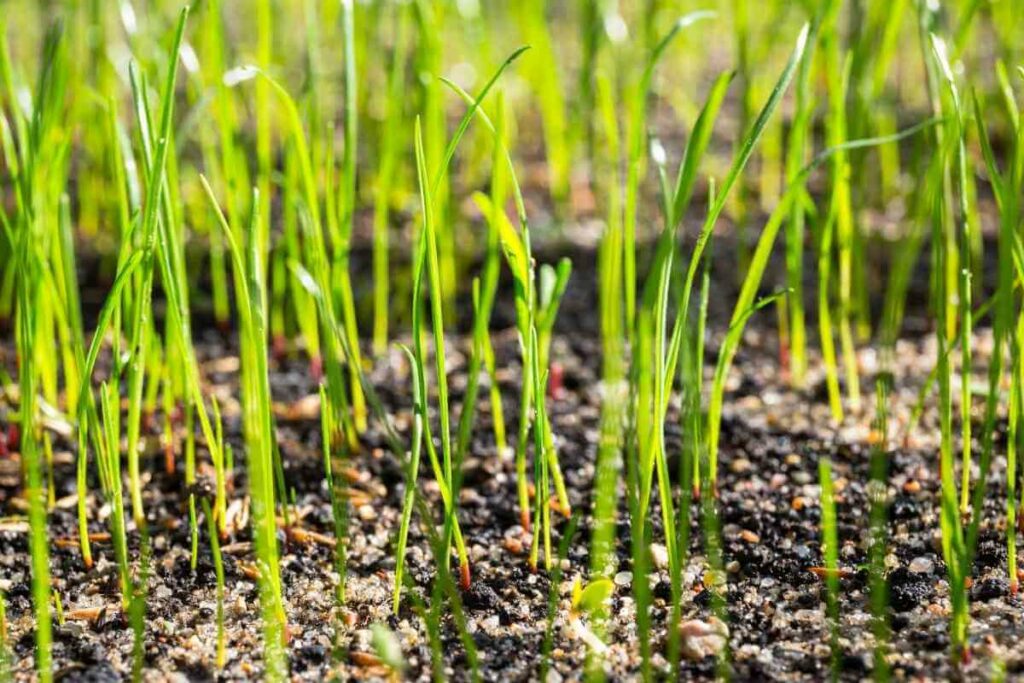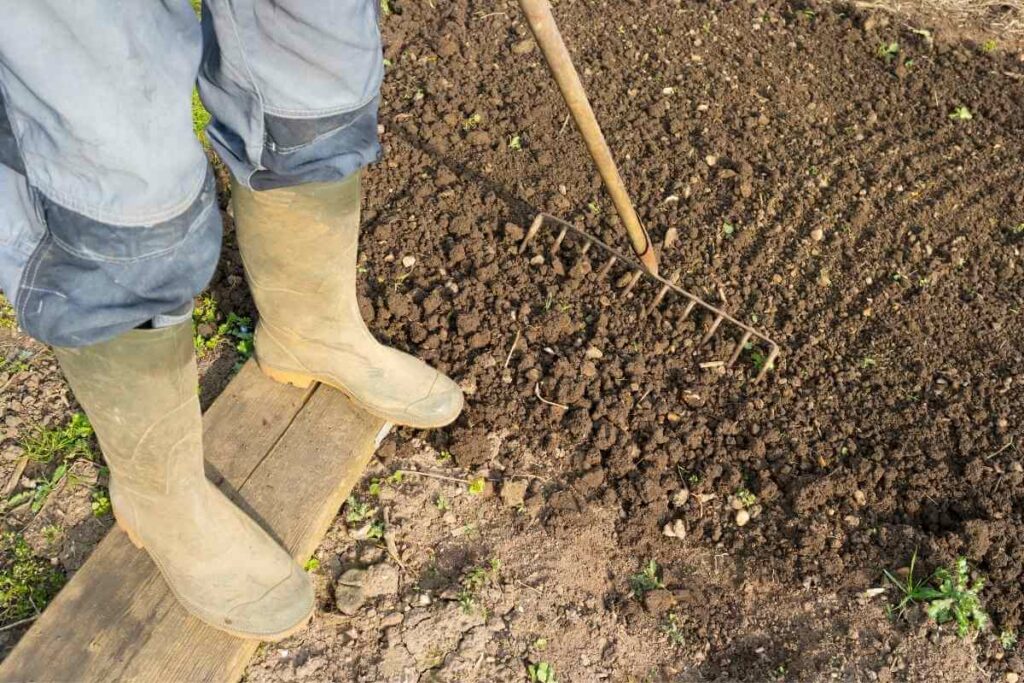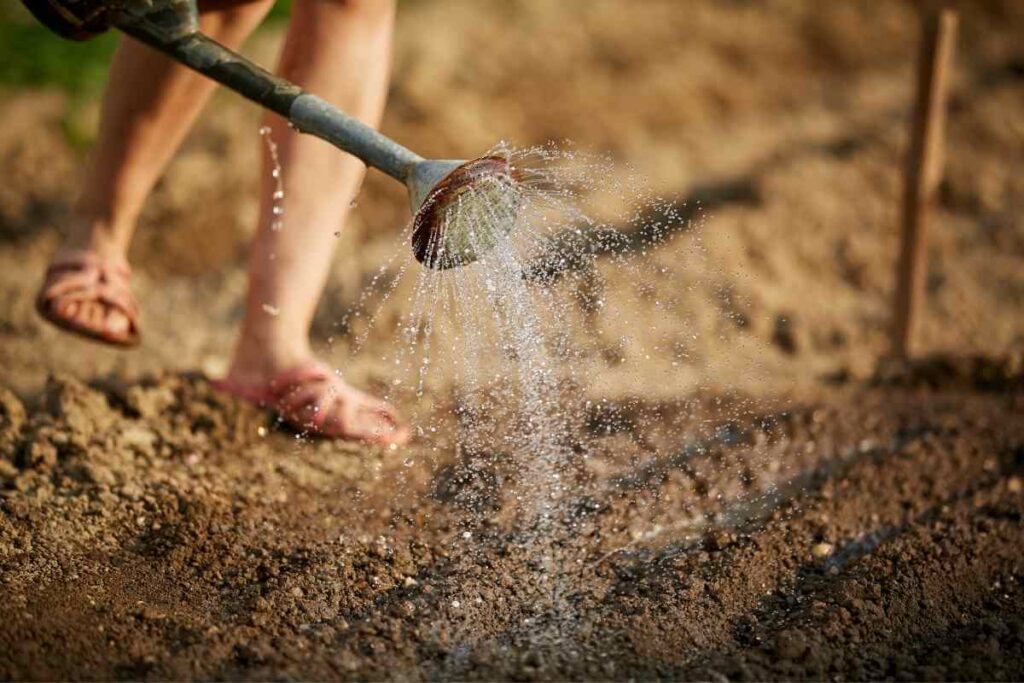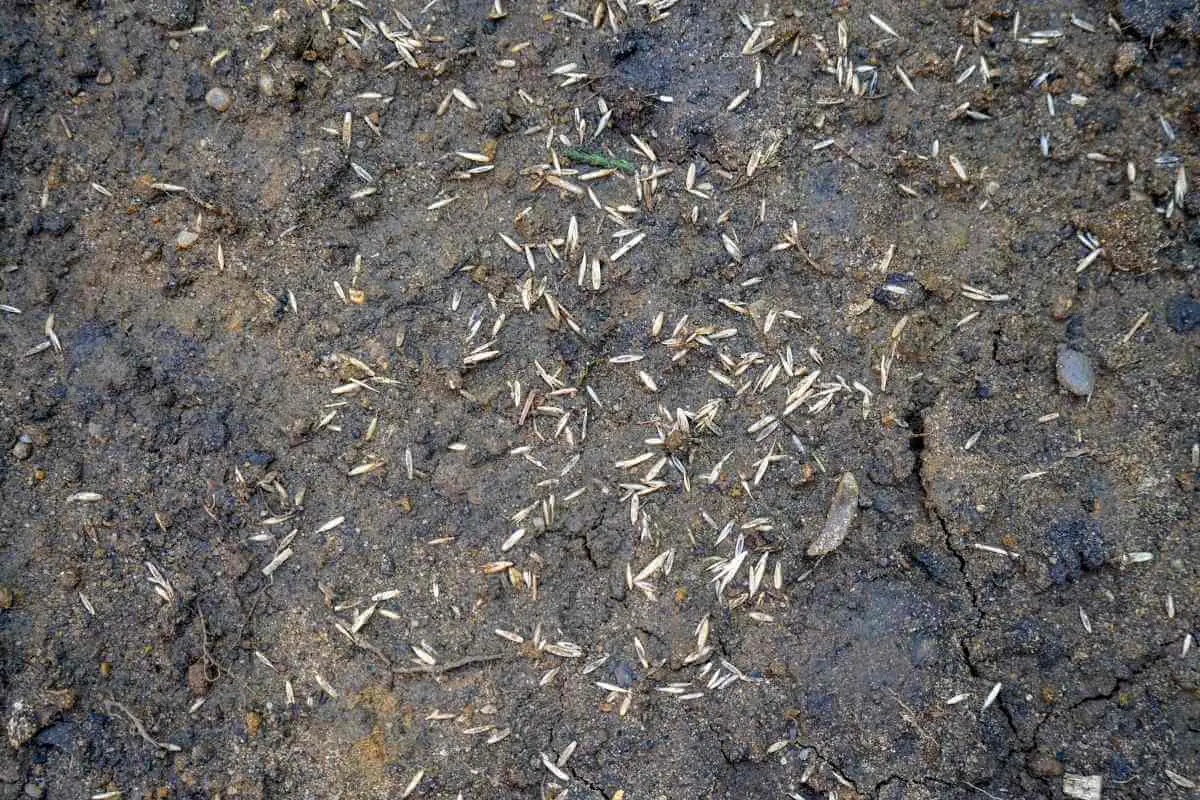You might be tempted to throw your grass seeds in the backyard and hope that they’ll perfectly grow into a beautiful lawn of grass.
It’s the easy way to go, but do grass seeds need to be buried, anyway?
To give you the quick answer to that question, yes, grass seeds should be buried if you don’t want them going to waste or being eaten by birds. Read on to learn more about the various factors to consider based on your specific scenario.
Will Grass Seeds Grow Without Getting Covered?
If you spread some grass seeds on top of the soil without covering them with soil or mulch, some of them will sprout, but the majority won’t.

The reason is that two conditions need to be met to grow a grass lawn:
- First, you need the right amount of moisture required for germination, which can be achieved by covering your seeds with topsoil.
- The second condition is that the soil must be warm enough to allow for germination.
Germination is the sprouting of seeds into mature grass.
It Takes Time: This process can take anywhere from a few days up to full weeks, depending on the soil’s temperature and moisture level.
Benefits of Burying Grass Seeds
Here are some of the perks of covering your grass seeds with soil:
- Improves overall water retention
- Provides protection from birds eating the seeds
- Keeps the seeds in their intended position and prevents erosion
- Provides protection from direct sunlight exposure, which may eventually cause drying
- Accelerates the rooting process
Are You Planning a New Lawn, or Is It Just a Turn Renovation?
Deciding if you should bury your grass seeds or not depends on whether you’re creating a new lawn or fixing thinning grass in your existing landscape.
If you’re still hoping to see the first few square inches of grass, then, by all means, bury the grass seeds. Other than that, most of them will just be food for the birds.
If you’re only renovating your turf, things will be a bit different.
Since you’ll be just seeding specific areas in your lawn, the surrounding grass will act as a cover for the new seeds. So, you may not really need to bury the seeds in that case.
Nevertheless, you might still want to bury them just to be on the safe side. Your seeds shouldn’t be exposed in all scenarios, at least if you want them to germinate properly.
Oh, and if you’re dealing with bald patches, raking is highly recommended.
How to Rake Your Grass Seeds?
The best way to rake your grass seeds is to use a regular household rake.

But if you don’t have access to a rake, you can use a heavy doormat or a wood board to push the seeds into the soil. A steel mat would also get the job done, too.
Just make sure that you don’t accidentally push the seeds out of position, regardless of the tool you’re going to use with this method.
How Deep Should Grass Seeds Be Buried?
As a general rule of thumb, you need to bury your grass seeds under 1/4–1/2 inches of soil.
Don’t trick yourself into thinking that going deeper would do any good for your grass seeds.
In fact, burying them too deep may prevent the seedlings from coming out from the soil and germinating.
On the other hand, shallowly burying the seeds would be just as useless as not burying them at all.
For spreading the seeds, consider using a mechanical spreader. There are multiple types of spreaders that you can use depending on your needs and the size of your lawn, including rotary spreaders and drop spreaders.
Rotary spreaders work best in large lawns, but they aren’t very precise.
On the other hand, drop spreaders provide more precision by dropping the seed within your spreader’s width as you move, but covering extensive gardens or lawns with one can be a lot of work.
How Long Does Grass Seed Germination Take?
Typically, grass seeds start to germinate within two to four weeks, provided that you’ve buried them deep enough into the soil.
It’s also important to note that your watering techniques can significantly affect germination.
Aggressive watering may erode the seeds and move them out of position. So, it’d be best if you use light sprinkling.
On the other hand, if you spread the seeds on top of the soil, they won’t germinate appropriately due to erosion.
Water Your Grass Seeds Correctly
To grow a healthy grass lawn, you need to keep the seeds and seedlings at the recommended moisture levels.
But since you probably don’t have any lab equipment to measure how moist the soil is, you can try to get as close as possible to watering the seeds the right way with a few simple guidelines.
In the initial phases, you need to lightly water the seeds two or three times a day, preferably in the early morning and noon.
If you notice that puddles have started to form, it’s time to turn off the tap.

Then, when the seedlings start growing, water them heavily instead of frequently.
For example, if you used to water the seeds two to three times daily, water the seedlings only once or twice per day, but use more water and lengthen each watering session considerably.
Finally, once the grass grows tall, you need to taper off watering the lawn.
Final Words
So, do grass seeds need to be buried?
A wise man would say yes unless, of course, you want to waste your money or feed the birds.
When you bury your grass seeds, watering them will be more effective, and germination rates will be a lot quicker than if you don’t.
The soil also provides a good habitat for the seedlings to fixate their roots.
There are some cases when burying the seeds isn’t that necessary, but we’d still recommend burying them. After all, there’s no reason you shouldn’t.
However, if your lawn is too big and you only want to fix some bald patches, it might be a good idea to save yourself some time and effort by spreading the seeds on top of the soil.
Also Helpful
- 7 Centipede Grass Problems You Might Be Having
- What Is the Best Crabgrass Killer for Your Lawn?
- Why Is My Newly Sown Grass Turning Yellow?
